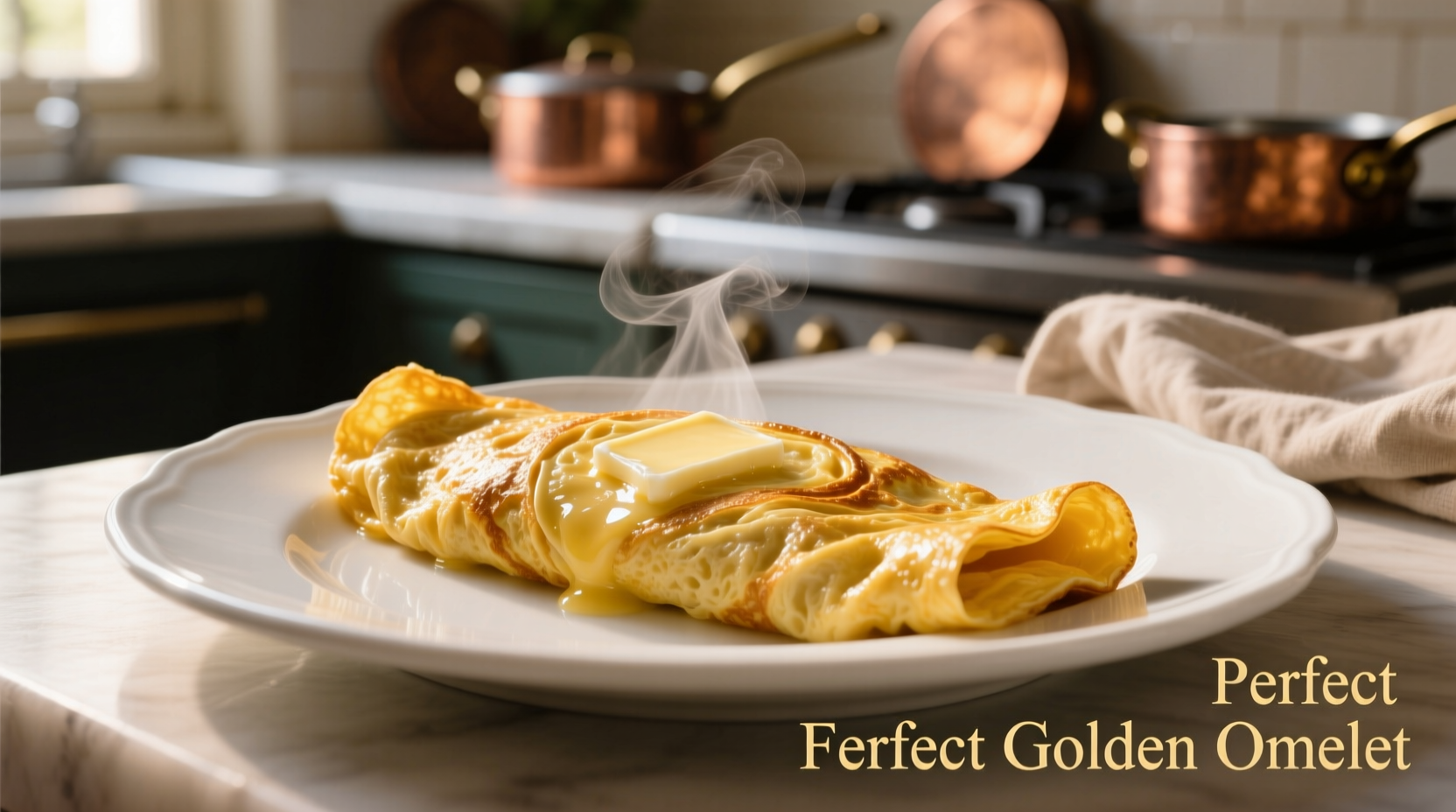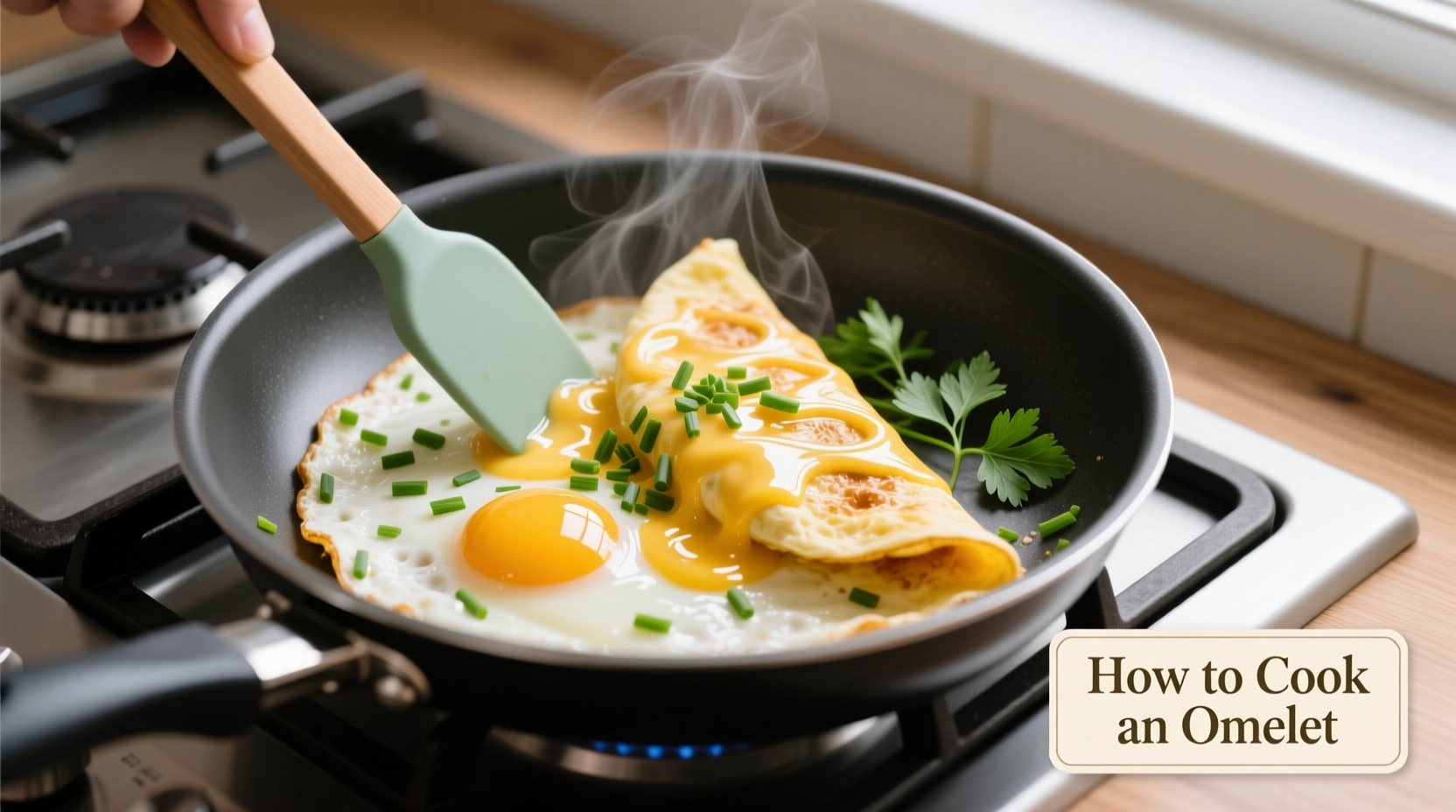Master the perfect omelet in just 5 steps: Use 2-3 fresh eggs beaten with a pinch of salt, cook over medium-low heat in a nonstick 8-inch pan with 1 tablespoon butter, gently stir until softly set, tilt and fold when still slightly moist, then slide onto a warm plate. The ideal cooking temperature is 275-325°F (135-163°C) - hot enough to set the eggs but not brown them.
Creating a flawless omelet seems simple, yet many home cooks struggle with rubbery textures, broken folds, or uneven cooking. As a French-trained chef who's taught thousands of students the art of egg cookery, I've discovered that mastering this classic dish requires understanding both technique and science. The perfect omelet should be tender, slightly creamy inside, with a smooth golden exterior that folds cleanly without tearing.
Essential Tools and Ingredients Checklist
Before you begin, gather these kitchen essentials that make all the difference in achieving restaurant-quality results:
| Must-Have Items | Why It Matters | Pro Tip |
|---|---|---|
| 8-inch nonstick skillet | Narrow diameter creates ideal thickness | Carbon steel works well but requires seasoning |
| Fresh large eggs (within 7 days) | Firmer whites create better texture | Room temperature eggs incorporate air better |
| Unsalted butter | Higher smoke point than salted varieties | 1 tablespoon per 2-3 eggs is ideal |
| Nylon or silicone spatula | Gentle on nonstick surfaces | Thin edge slides easily under delicate eggs |
According to culinary research from the Culinary Institute of America, the freshness of eggs significantly impacts texture. Fresh eggs have tighter protein structures that create a more cohesive, tender result when cooked properly. The USDA Food Safety and Inspection Service recommends cooking eggs until both whites and yolks are firm, but for French-style omelets, we stop just before complete setting to allow carryover cooking.
Your Step-by-Step Omelet Journey
Preparation Phase: Setting Up for Success
Begin by whisking 2-3 large eggs with 1-2 teaspoons of water or milk and a pinch of fine sea salt. The water creates steam that helps produce a lighter texture. Whisk vigorously for 30-45 seconds until fully blended but not foamy. Let the mixture rest for 2 minutes - this allows bubbles to dissipate and creates a more even cook.
Professional chefs at Le Cordon Bleu emphasize that proper whisking technique is crucial. "The eggs should be homogenous but not aerated," explains Chef Thomas Keller in Ad Hoc at Home. Over-whisking incorporates too much air, leading to a puffy, less refined texture.
Cooking Phase: The Critical Temperature Window

Heat your skillet over medium-low heat (around 300°F) for 2 minutes. Add 1 tablespoon of butter and swirl to coat the surface evenly. When the butter stops foaming but hasn't browned, pour in the eggs.
Immediately begin stirring with a spatula using small circular motions while gently shaking the pan. This creates fine curds throughout the mixture. After about 20 seconds, when the eggs are mostly set but still slightly runny on top, stop stirring. Tilt the pan to 45 degrees and use your spatula to fold the edge toward the center.
Food science reveals why temperature control matters: egg proteins begin to coagulate at 140°F (60°C) and fully set around 158°F (70°C). Cooking too hot causes rapid protein bonding that squeezes out moisture, creating a tough, rubbery texture. The ideal omelet reaches 145-150°F internally - warm enough to be safe but still slightly creamy.
Finishing Phase: The Art of the Fold
With the pan tilted, use your spatula to roll the omelet toward the edge. Give the pan a quick wrist flick to complete the fold as it slides onto your plate. The finished omelet should have a smooth, slightly shiny exterior with a tender, custard-like interior.
This classic French technique dates back to the 17th century, as documented in Larousse Gastronomique. Unlike American-style omelets that are fully cooked and often browned, the French version celebrates eggs' delicate nature with minimal filling and precise temperature control.
Common Mistakes and How to Avoid Them
Even experienced cooks make these critical errors when preparing omelets:
- Using high heat - Creates browned, tough eggs instead of tender curds
- Overfilling the pan - Makes proper folding impossible
- Adding fillings too early - Wet ingredients create steam pockets
- Waiting too long to fold - Eggs overcook and become difficult to shape
For cheese lovers, add grated Gruyère during the last 10 seconds of cooking. The residual heat melts it perfectly without making the omelet watery. Remember that traditional French omelets contain minimal fillings - usually just a touch of fresh herbs like chives or parsley.
Mastering Omelet Variations
Once you've perfected the basic technique, experiment with these popular styles:
Classic French Omelet
Minimalist approach with no browning, soft interior, and smooth exterior. Served plain or with fines herbs. Requires precise temperature control and quick folding technique.
American Diner Style
Cooked slightly longer with more fillings (cheese, ham, vegetables). Often flipped completely and served with edges sealed. Tolerates higher heat but requires careful timing to prevent dryness.
Spanish Tortilla
Thicker preparation with potatoes and onions cooked directly in the egg mixture. Requires finishing under a broiler or flipping with a plate. Showcases how regional variations adapt the basic technique.
Pro Tips for Consistent Results
Professional kitchens achieve perfect omelets every time by following these practices:
- Use a thermometer to verify pan temperature (275-325°F ideal)
- Keep your wrist loose for better pan control during folding
- Warm your serving plate to prevent carryover cooking
- Practice the folding motion with water before using eggs
- Clean your pan immediately after cooking to maintain nonstick surface
Remember that omelets wait for no one - have all ingredients prepped and ready before you start cooking. The entire process from heating the pan to plating should take no more than 3 minutes for the best texture.
Frequently Asked Questions
How many eggs should I use for a single omelet?
For a standard restaurant-style omelet, use 2-3 large eggs. Two eggs create a delicate, thin omelet perfect for the French style, while three eggs produce a slightly more substantial version that holds up better with fillings. Using more than three eggs typically results in an omelet too thick to cook evenly.
Can I make a good omelet without a nonstick pan?
Yes, but it requires more skill. A well-seasoned carbon steel or cast iron pan can work well, but you'll need to use more butter and perfect your temperature control. The key is ensuring your pan is properly heated before adding butter - it should foam but not brown immediately. Many professional chefs prefer carbon steel for omelets once properly seasoned.
Why does my omelet stick to the pan?
Omelets stick primarily due to incorrect temperature or insufficient fat. The pan should be hot enough that butter sizzles gently but doesn't smoke or brown immediately. Use enough butter (1 tablespoon per 2-3 eggs) and ensure it coats the entire surface. If using a nonstick pan, check for scratches that might compromise the coating. Never use high heat, as this causes proteins to bond aggressively to the surface.
How do I prevent my omelet from becoming watery?
Watery omelets result from either undercooked eggs or wet ingredients. Cook over medium-low heat to allow proper protein setting without expelling moisture. If adding fillings, ensure vegetables are thoroughly cooked and cooled first - raw vegetables release water during cooking. Stop cooking when the omelet is still slightly moist on top, as carryover cooking will complete the process during folding.











 浙公网安备
33010002000092号
浙公网安备
33010002000092号 浙B2-20120091-4
浙B2-20120091-4